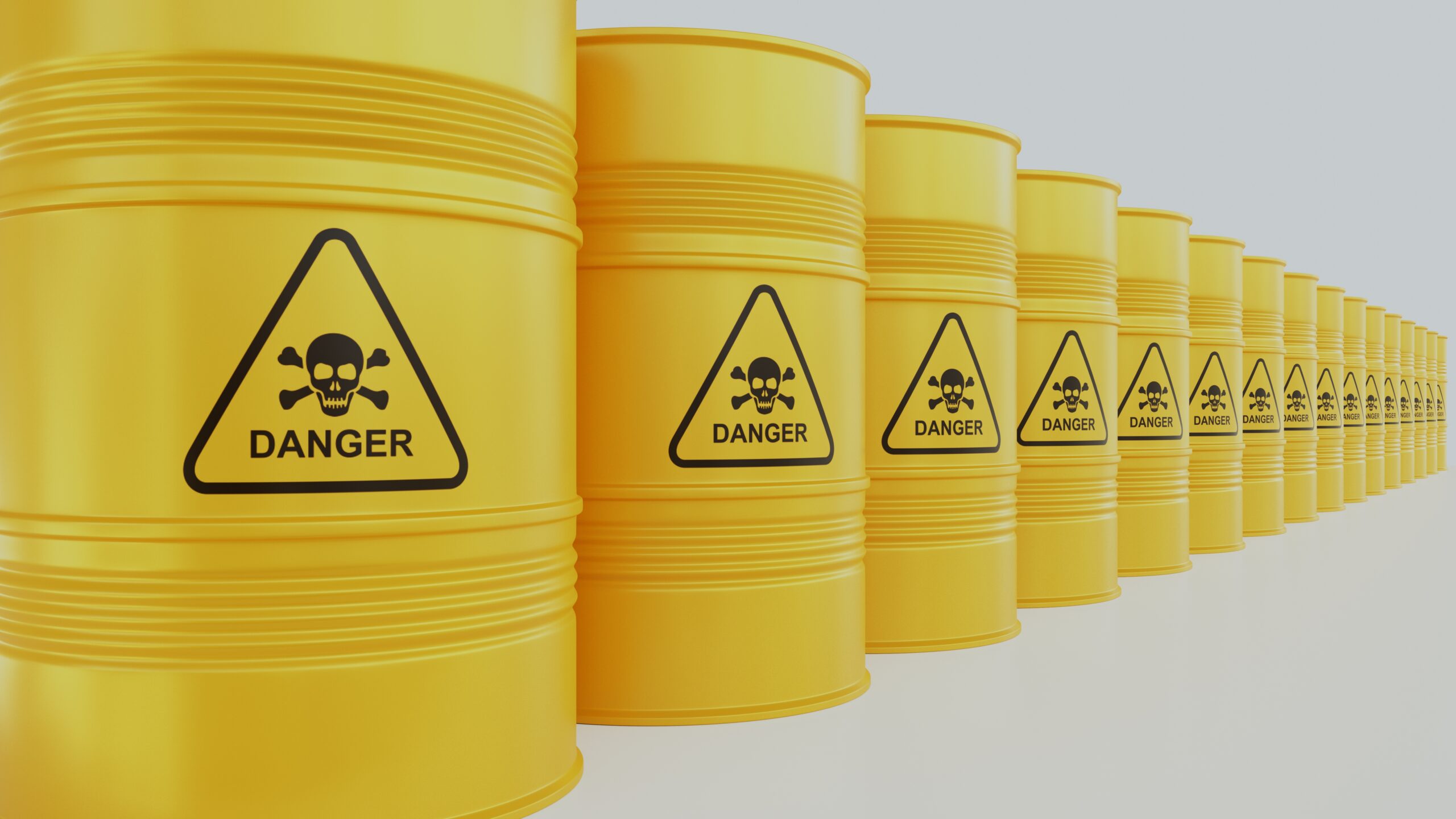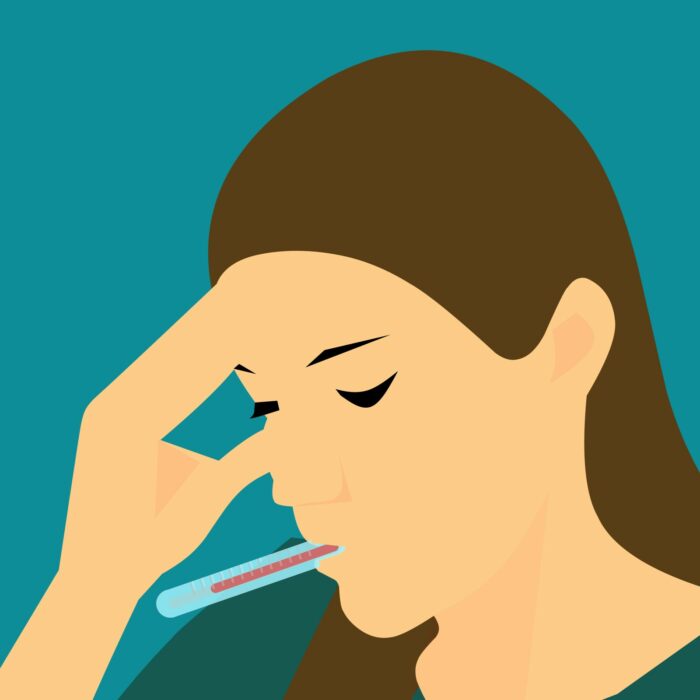Hodgkin’s Lymphoma Due to AFFF
Hodgkin's lymphoma, a form of cancer that affects the lymphatic system, has been increasingly associated with occupational exposure to Aqueous Film-Forming Foam (AFFF). Utilized by firefighters for its efficacy in extinguishing fuel fires, AFFF contains per- and poly-fluoroalkyl substances (PFAS), which are chemicals linked to adverse health outcomes, including immune system disruption.

The recurrent use of AFFF by firefighters potentially heightens their risk of developing this type of cancer. Characterized by the presence of Reed-Sternberg cells, Hodgkin's lymphoma requires timely diagnosis for effective treatment. As the scientific community delves deeper into the connection between AFFF exposure and lymphatic malignancies, it is critical to ensure that affected individuals receive appropriate medical evaluation and legal support to address this occupational hazard.
Key Takeaways
- AFFF exposure, which contains PFAS chemicals, increases the risk of developing Hodgkin's lymphoma.
- PFAS exposure compromises the immune system and reduces its ability to fight infection and disease
- Firefighters who use AFFF are particularly at high risk of developing Hodgkin's lymphoma due to their frequent exposure to these chemicals.
- Early diagnosis of Hodgkin's lymphoma is vital for better prognosis and successful treatment, and prompt medical assistance should be sought if the disease is suspected.
Understanding AFFF Exposure

In understanding AFFF exposure, it is imperative to recognize that the primary compounds in this firefighting foam, per- and poly-fluoroalkyl substances (PFAS), have been linked to immune system disruptions that elevate the risk of Hodgkin's lymphoma among exposed individuals, particularly firefighters.
Research delineates AFFF exposure risks, highlighting the correlation between occupational contact with PFAS and subsequent adverse health outcomes. Analytical scrutiny of AFFF exposure in the workplace highlights the urgency for mitigating strategies to safeguard firefighters. Epidemiological studies corroborate the detrimental impact of PFAS on immunological functions, substantiating the causal nexus with immune perturbation and Hodgkin's lymphoma pathogenesis. Thus, it is critical to employ rigorous protective measures and implement comprehensive health surveillance to address the hazards associated with AFFF exposure preemptively.
PFAS Chemicals Explained

Per- and polyfluoroalkyl substances, commonly known as PFAS, are a group of synthetic chemicals prevalent in Aqueous Film Forming Foam (AFFF) that have been implicated in compromising human immune function. These chemicals are characterized by their strong carbon-fluorine bonds, contributing to their persistence in the environment and resistance to degradation, which are key PFAS chemical properties. The health risks of PFAS include immunotoxicity, hormone disruption, and cancer. Analytical scrutiny of these chemicals reveals their widespread presence and bioaccumulation potential.
| Property | Description | Relevance to Health Risk |
|---|---|---|
| Chemical Stability | Resistant to breakdown; persists in the environment | Increases lifetime exposure risk |
| Bioaccumulation | Accumulates in organisms over time | Heightens potential for toxicity |
| Immune Disruption | Alter immune system function | Contributes to disease, including Hodgkin's lymphoma |
Evidence-based research underscores the imperative to understand PFAS exposure implications fully, particularly for populations with substantial AFFF contact, such as firefighters.
Immune System Compromise

Several studies have demonstrated that exposure to PFAS through AFFF compromises immune system function, heightening the risk for diseases such as Hodgkin's lymphoma. PFAS, a constituent of AFFF, has been linked to immune suppression, which in turn may facilitate cancer development. The persistence of PFAS compounds in the body and environment leads to prolonged immune system engagement, potentially altering immune surveillance and response mechanisms.
Additionally, the bioaccumulation of these substances may contribute to long-term health effects, including a sustained impact on the body's ability to identify and eliminate cancerous cells. This immunotoxicity raises concerns about the increased incidence of Hodgkin's lymphoma amongst individuals with occupational or environmental exposure to AFFF.
Firefighters’ Elevated Risk
Firefighters face an increased risk of Hodgkin's lymphoma due to their frequent exposure to Aqueous Film-Forming Foams (AFFF) containing PFAS. These substances, known for their fire suppression capabilities, unfortunately, carry considerable health hazards. The implementation of firefighters' safety measures is paramount to reducing exposure. Rigorous decontamination protocols and the use of personal protective equipment (PPE) are essential strategies for protecting firefighters from the harmful effects of PFAS.
| Factor | Relevance to Firefighters' Risk |
|---|---|
| AFFF Use | Direct relation to increased Hodgkin's lymphoma cases |
| PFAS Exposure | Compromises immune function, elevating cancer risk |
| Safety Measures | Can mitigate risks; AFFF alternatives being explored |
Evidence-based studies underscore the urgent need for AFFF alternatives that do not compromise firefighter safety or the environment. The transition to such alternatives is critical in the endeavor to safeguard the health of these frontline heroes.
AFFF-Induced Immune Weakness
Exposure to Aqueous Film-Forming Foams (AFFF), laden with per- and poly-fluoroalkyl substances (PFAS), has been linked to considerable immune system suppression, a precursor to conditions such as Hodgkin's lymphoma. Analytical assessments of long-term effects reveal that PFAS compounds interfere with immune homeostasis, potentially leading to a weakened response to pathogens and vaccines. This immunotoxicity raises considerable concerns for public health and necessitates the implementation of robust prevention strategies. Occupational safety guidelines must be refined to minimize AFFF contact, and rigorous health monitoring is imperative for the early detection of immunological aberrations. Furthermore, the development and adoption of PFAS-free alternatives in firefighting protocols could mitigate future risks, safeguarding firefighters and the broader community from potential AFFF-induced immune weakness.
Key Studies on PFAS Impact
In light of the alarming correlation between AFFF use and Hodgkin's lymphoma, recent studies focusing on the impact of PFAS compounds have unveiled critical insights into the mechanisms behind immune system impairment. These investigations elucidate how PFAS impact on immune health, and the link between AFFF exposure and immune system dysfunction.
| Study Focus | Key Findings | Implications |
|---|---|---|
| PFAS Immunotoxicity | PFAS reduces antibody responses | Higher susceptibility to infections |
| Longitudinal Observations | Correlation between PFAS levels and lymphoma | Potential causative relationship |
| Mechanistic Analysis | PFAS disrupts immune cell function | Direct impact on immune competency |
These findings are derived from rigorous, peer-reviewed research that analytically decodes the effects of PFAS on biological systems, particularly the immune system. The technical scrutiny of these studies provides a foundation for understanding and mitigating the health risks associated with AFFF exposure.
Itching and Infection Risks
Many firefighters who regularly handle AFFF experience persistent itching and a heightened susceptibility to infections, symptoms that may herald the onset of Hodgkin's lymphoma. The presence of PFAS in AFFF contributes to immune dysfunction, paving the way for opportunistic infections and signaling potential malignancies.
Evidence-based prevention strategies may include the reduction or elimination of AFFF usage, improvements in personal protective equipment, and regular health screenings for early detection. Medical treatment options for affected individuals range from pharmacological interventions to address symptoms to more comprehensive oncological therapies aimed at treating Hodgkin's lymphoma.
| Prevention Strategies | Impact on Firefighters | Medical Treatment Options |
|---|---|---|
| Reduced AFFF usage | Decreased PFAS exposure | Symptomatic Relief |
| Enhanced Protective Gear | Lowered risk of infection | Chemotherapy |
| Regular Health Screenings | Early detection of lymphoma | Radiation Therapy |
| Hygiene Protocols | Prevention of secondary infections | Immunotherapy |
| Education and Training | Informed handling of chemicals | Targeted Drug Treatments |
Unintended Weight Loss
Firefighters' exposure to AFFF has been linked not only to compromised immune function but also to concerning symptoms such as unintended weight loss, a potential indicator of Hodgkin's lymphoma. This manifestation, often coupled with other unexplained symptoms, necessitates a thorough clinical evaluation. In the context of occupational exposure to PFAS, unintended weight loss must be scrutinized analytically, considering its etiological linkage to systemic health detriments such as malignancies. Affected individuals must seek timely medical assistance to discern the underlying cause and to initiate appropriate interventions. The correlation between AFFF exposure and unintended weight loss amplifies the need for vigilant health surveillance in firefighters, emphasizing the importance of early detection and management of potential Hodgkin's lymphoma cases.
Chronic Fatigue and Fever

Frequently, firefighters exposed to AFFF report symptoms of chronic fatigue and persistent fever, which are potential indicators of Hodgkin's lymphoma. These symptoms suggest a compromised immune function, often a harbinger of more serious conditions. Given the correlation between AFFF exposure and the onset of such symptoms, adopting a proactive approach to monitoring, diagnosis, and management is essential.
- Chronic Fatigue Management: Ensuring adequate rest, nutritional support, and medical interventions to mitigate immune suppression.
- Fever Prevention Strategies: Regular health screenings and minimizing exposure to PFAS-containing foams to reduce the incidence of fever.
- Early Detection: Continuous health surveillance for firefighters to facilitate early identification of Hodgkin's lymphoma symptoms.
Evidence emphasizes the importance of these measures in potentially reducing the long-term health impacts associated with AFFF exposure.
PFAS Effects on Immunity
Regarding the detrimental impact of PFAS on immunity, research has consistently demonstrated that these chemicals compromise the immune system's ability to mount an effective defense against infections, potentially leading to conditions such as Hodgkin's lymphoma. The immunotoxic effects of PFAS are well-documented, with correlations observed between exposure to these substances and the increased incidence of autoimmune disorders. Furthermore, a substantial body of evidence has reinforced the association between PFAS and cancer risk, particularly concerning lymphoproliferative diseases.
| Exposure to PFAS | Immune System Compromise | Potential Health Consequence |
|---|---|---|
| Chronic | Diminished antibody response | Increased Hodgkin's lymphoma risk |
| Acute | Altered cellular immunity | Enhanced autoimmune disorder susceptibility |
| Occupational | Impaired infection defense | Elevated cancer incidences |
This table encapsulates the critical relationship between PFAS exposure and compromised immune health, underscoring the gravity of its effects on individuals' well-being.
Necessity of Early Detection
Every case of Hodgkin's lymphoma potentially linked to AFFF exposure emphasizes the importance of early detection to optimize treatment outcomes and mitigate long-term health consequences. The importance of early detection cannot be overstated, as it significantly influences the disease's prognosis.
- Prompt Diagnosis: Reduces the risk of cancer progression to advanced stages, enhancing the likelihood of successful treatment.
- Survival Rates: Early-stage detection is associated with higher survival rates, showcasing the benefits of early diagnosis.
- Quality of Life: Detecting Hodgkin's lymphoma early can lead to less aggressive treatment regimens, preserving the quality of life for patients.
The importance of regular medical check-ups cannot be overstated, as they facilitate the early detection of subtle clinical manifestations, which might otherwise be overlooked. Early intervention in Hodgkin's lymphoma treatment is pivotal; studies illustrate that initiating therapy during the initial stages of the disease greatly increases survival rates. The technical analysis of disease progression suggests that prompt diagnosis curtails the extension of malignancy, preserving organ function and maintaining the patient's quality of life. Moreover, analytical models predict a cost-effective benefit in healthcare resource utilization when a timely diagnosis is established, reducing the long-term financial burden on both patients and health systems.
Legal Aspects of Exposure Claims

Numerous individuals exposed to Aqueous Film Forming Foam (AFFF) may have the legal right to seek compensation for Hodgkin's lymphoma attributed to PFAS-related immune system damage. The filing process for exposure claims necessitates a meticulous assembly of evidence, often under the guidance of legal assistance proficient in environmental law and toxic torts.
- Evidence Collection: Detailed documentation linking AFFF exposure to diagnosed Hodgkin's lymphoma is critical.
- Statute of Limitations: Awareness of state-specific deadlines is essential to file claims timely.
- Expert Testimony: Leveraging scientific and medical expertise to substantiate the causal relationship between AFFF and immune system impairment leading to Hodgkin's lymphoma.
An analytical approach to legal claims ensures that the complexities of PFAS exposure and its health implications are rigorously evaluated and articulated in a court of law.
Claim Filing and Compensation
Transitioning from the legal intricacies of exposure claims, the process of filing a compensation claim for Hodgkin's Lymphoma due to AFFF exposure requires a structured approach to evidence gathering and case presentation. Integral to the claim's success is the evaluation process, which involves analysis of employment or military service records, medical documentation, and substantiation of AFFF use.
The settlement guidelines necessitate a clear linkage between the claimant's Hodgkin's Lymphoma diagnosis and their AFFF exposure history. Legal professionals conduct a comprehensive review, ensuring that all evidentiary requirements align with the established compensation criteria. This technical and evidence-based approach is necessary for the accurate adjudication of claims and the subsequent awarding of just compensation for affected individuals.
Frequently Asked Questions
How Has the Regulation of AFFF and PFAS Changed in Recent Years to Protect Firefighters and the Public From Potential Health Risks?
Regulatory evolution regarding AFFF and PFAS has intensified globally, with numerous countries implementing partial or complete bans on these substances. Technical analyses indicate these regulatory measures are imperative to mitigate health risks.
The transition towards PFAS-free firefighting foams and stricter controls on PFAS production and use reflects an evidence-based response to the chemicals' persistent and bioaccumulative nature, safeguarding both firefighters and the broader public from exposure-related hazards.
What Alternative Firefighting Foams or Methods Are Being Developed or Recommended to Reduce the Reliance on AFFF and Minimize PFAS Exposure?
In the crusade against destructive blazes, foam alternatives emerge like new warriors in a battle for safety. Leveraging green chemistry, researchers are developing firefighting foams that forego traditional perfluoroalkyl and poly-fluoroalkyl substances (PFAS), thus reducing environmental and health risks. These novel concoctions are observed through rigorous, evidence-based analysis to ensure efficacy and safety, indicating a paradigm shift in firefighting that eschews toxic legacies for a sustainable future.
Are There Any Specific Lifestyle or Dietary Recommendations for Firefighters to Help Mitigate the Effects of PFAS Exposure on Their Immune Systems?
To mitigate the effects of PFAS exposure on firefighters' immune systems, it is recommended to establish exercise routines and increase antioxidant intake. Regular physical activity can enhance immune function and promote detoxification, while antioxidants help combat oxidative stress caused by toxins.
Implementing such lifestyle modifications can provide a proactive approach to reducing the adverse health impacts associated with PFAS exposure, though further research is warranted to quantify their efficacy.
How Can Firefighters and Other Individuals Potentially Exposed to AFFF Participate in Ongoing Research or Health Monitoring Programs Related to PFAS and Its Health Impacts?
Firefighters and individuals potentially exposed to AFFF can engage in PFAS biomonitoring and research participation by enrolling in scientific studies or health programs. These initiatives rigorously analyze bio-samples to track the presence and impact of PFAS compounds.
Participation provides important data, aiding the technical assessment of PFAS exposure effects. Through analytical research, strategies for mitigating health risks can be developed, contributing to evidence-based recommendations for exposed populations.
What Mental Health Resources and Support Are Available for Firefighters Coping With the Diagnosis of Hodgkin’s Lymphoma or the Anxiety of Potential Afff-Related Health Risks?
For firefighters grappling with serious health diagnoses or the anxiety of potential risks, specialized mental health resources are essential. Access to firefighter therapy programs and robust support networks provides emotional and psychological assistance. These resources are designed to offer evidence-based, targeted support, addressing occupational stressors and fostering resilience. Leveraging such networks and therapy options helps in mitigating the mental health impacts of the profession and associated anxieties.




